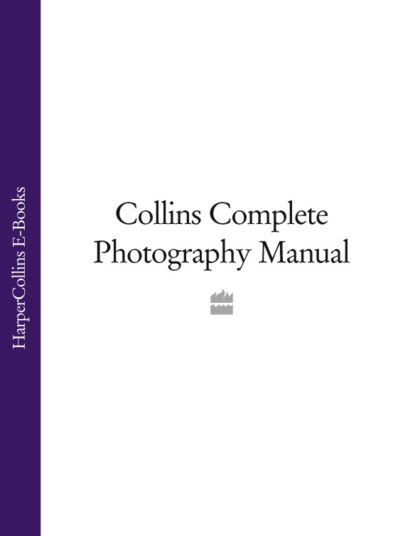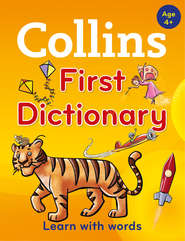По всем вопросам обращайтесь на: info@litportal.ru
(©) 2003-2024.
✖
Collins Complete Photography Manual
Автор
Год написания книги
2018
Настройки чтения
Размер шрифта
Высота строк
Поля
Wide-angle lenses have a profound effect on perspective. This is not because of their inherent optical properties – the explanation is, in fact, much simpler. Wide-angle lenses make objects appear smaller, with the result that you move closer to fill the frame. The fact of doing this exaggerates the difference in size between nearby objects and those further away. In turn, this produces the ‘keystoning’ effect which is often seen when tall buildings have been photographed from their base. However, this exaggeration of perspective can have creative uses, as well. The dramatic size differences between close and distant objects produce a strong feeling of three-dimensional depth and compositional ‘movement’ in images taken in this way.
In common with most specialist equipment, wide-angle lenses have both advantages and disadvantages. Their most obvious advantage is that they enable you to get more into your picture. They also offer more depth-of-field than lenses of longer focal lengths at a given aperture, so that it is easier to get both close-up and distant subjects sharp at the same time.
Image distortion
One downside of wide-angle lenses is that they can introduce distortion. This distortion manifests itself in two different ways. The most obvious is perspective distortion, in which the walls of tall buildings, for example, appear to converge, or objects at the edge of the frame appear to be toppling inwards. This undesirable effect is called ‘converging verticals’, or ‘keystoning’. It is not a fault in the lens, but simply a reflection of the fact that you tend to stand closer to your subject with a wide-angle lens, and this means that you tilt the camera more to take in tall objects. If possible, you should compose your shots in such a way that the camera can be kept level.
The wide-angle setting of zoom lenses can often cause another unwanted effect known as ‘barrel distortion’ to occur in images as well. In this case, the centre of the image appears to bulge outwards, and straight lines become bowed. This is one of the compromises inherent in zoom lens design.
USES FOR WIDE-ANGLE LENSES
Huge, sweeping landscapes can only be captured with a wide-angle lens. With longer focal lengths you are restricted to picking out interesting details.
Domestic interiors can be quite cramped, making photography difficult. A wide-angle lens will make a room look larger and enables you to get more people into the shot.
Landmarks and tourist attractions are often hemmed in by other buildings, leaving you no room to stand back to take the picture unless you have a wide-angle lens.
The big differences in size between close and distant objects enable you to produce surreal compositions in which everyday objects take on a monumental and dramatic appearance.
Telephoto Lenses
Like telescopes or binoculars, telephoto lenses magnify distant objects. They are essential for wildlife photography and for taking good pictures of many sports. Telephoto lenses can also be useful for picking out details in landscapes, or for head-and-shoulders portrait shots.
Like other lenses, telephotos are categorized according to their focal length. On a 35mm film camera, a 100mm lens would be a ‘short’ telephoto, a 200mm lens would be a ‘medium’ telephoto and a lens of 400mm or longer would be a ‘long’ telephoto.
Due to the magnification factor from their smaller sensor sizes, digital SLRs make telephoto lenses ‘longer’. Fitted to a digital SLR, a 200mm lens would have an equivalent focal length of around 320mm, and a 400mm lens would become a 640mm.
Professional photographers use fixed focal length, or ‘prime’, telephoto lenses. This is because they have wider maximum apertures which enable them to shoot in low light. This is essential for many sports, especially those held indoors under artificial lighting.
Telephoto zoom lenses
Telephoto zooms are more versatile than standard zoom lenses but have smaller maximum apertures. However, their flexibility and lower cost make them better-suited to general purpose photography.
Most ‘kit’ zooms (those supplied with the camera) have a maximum focal length of between 90 and 105mm, depending on the lens. This is not enough for sports and wildlife photography, and there may be other occasions in your photographic life when a longer lens is desirable or even essential.
Do bear in mind that the longer the focal length, the more difficult it will be to get steady shots. Small movements of the camera become magnified with long focal lengths and this causes two problems. Firstly, the subject will appear to bounce around the frame a lot more and it will be difficult to keep it centred. Secondly, camera-shake can cause blur at shutter speeds which would be ‘safe’ at normal focal lengths.
ADVANTAGES OF TELEPHOTO LENSES
Wildlife photography is difficult or impossible without telephoto lenses, since animals and birds frighten easily if you get too close.
Many sports are impossible to photograph successfully without a telephoto lens because spectator areas are a long way from the action.
Telephoto lenses can produce striking landscape shots, since they enable you to pick out distant details and ‘flatten’ perspective.
Portrait shots can be improved by throwing backgrounds out of focus. This requires shallow depth-of-field, a characteristic of telephoto lenses.
To find the minimum safe shutter speed, divide 1 by the focal length being used. With a 200mm lens, this gives a shutter speed of 1/200sec. Although most of the time this works, there is no absolute guarantee of sharpness and it may still be possible to see camera-shake at 1/400sec.
Some telephoto lenses have image-stabilization mechanisms which move elements within the lens to counteract any movement during the exposure. These can help you get sharp shots and shutter speeds two to four times slower than normal.
DISADVANTAGES OF TELEPHOTO LENSES
Telephoto lenses appear to ‘compress’ perspective. Unlike wide-angles, they reproduce subjects and their backgrounds at their true relative sizes, or at least closer to them.
This effect will become obvious if you attempt to photograph a tree, for example, against a distant mountain. If you fill the frame with the tree in both cases, the wide-angle lens will make the mountain tiny, while the telephoto will make it look much larger.
Telephoto lenses also make objects at different distances look closer together.
Extreme Lenses
At the extreme limits of optical design are ultra-wide and ultra-long lenses which can produce dramatic visual effects. However, these are also expensive and challenging to use.
Ultra-wide-angle lenses
Ultra-wide-angle lenses have focal lengths of 20mm or less. It is difficult to design lenses with good optical performance at these angles, and to make them render straight lines. ‘Fisheye’ lenses have even shorter focal lengths, but here the battle to reproduce lines as straight has been abandoned, and these lenses produce an almost spherical view of the world – hence the term ‘fisheye’. It is important to check the specifications of lenses in the 15-20mm range, because some will be genuine wide-angles and some will be fisheyes.
Ultra-wide-angle lenses can be difficult to use for a number of reasons. To avoid dramatically converging verticals (keystoning), it is important to keep the camera level when shooting, and many architectural photographers will use a tripod and a spirit level as they set up their shot to ensure that this is the case.
Another disadvantage of ultra-wide-angle lenses is that it may not be possible to use filters with them, either. The front element of the lens may well be so curved that it protrudes outwards too far, and the angle of view will be so wide that many filter fittings will intrude on the edges of the frame.
Ultra-long telephoto lenses
Ultra-long telephotos pose different problems. These are lenses with focal lengths of 400mm or longer. The problems are related to weight and magnification. These lenses are so heavy that it may be impossible to hand-hold them for more than a few seconds. Most photographers mount them on sturdy tripods instead.
USES OF EXTREME LENSES
Due to its scale, architectural photography can be quite a challenge. An ultra-wide-angle lens may be the only way to capture the subject in its entirety from the viewpoint available.
It is very difficult to fully capture the interiors of buildings – whether they are small or large – without an ultra-wide-angle lens. Other lenses can only capture sections or details.
In the case of sports that take place on a large pitch, such as baseball or soccer, you will need an ultra-telephoto lens to fill the frame with individual players.
At air shows, the public is kept well back from the display areas, so if you want to photograph aeroplanes in action, an ultra-telephoto lens will be essential.
A tripod is also necessary to help you keep the subject framed correctly. At these magnifications, the slightest movement is multiplied drastically, so hand-holding the camera is not really a viable option.
TELECONVERTERS
It is possible to increase the focal lengths of lenses with a ‘teleconverter’. These are supplementary lenses which fit between the camera body and the lens and magnify the image by a fixed amount, such as 1.4x, 2x or 3x. They are a much cheaper alternative to long-range telephoto lenses, but they do have drawbacks. The most serious is that they reduce the maximum aperture of the lens. A 1.4x converter will reduce the aperture by 1 stop, a 2x converter by 2 stops and a 3x converter by 3 stops. This reduction in the size of aperture increases the risk of camera-shake or subject movement in low light levels.
Specialist Lenses
Вы ознакомились с фрагментом книги.
Приобретайте полный текст книги у нашего партнера:
Приобретайте полный текст книги у нашего партнера:











